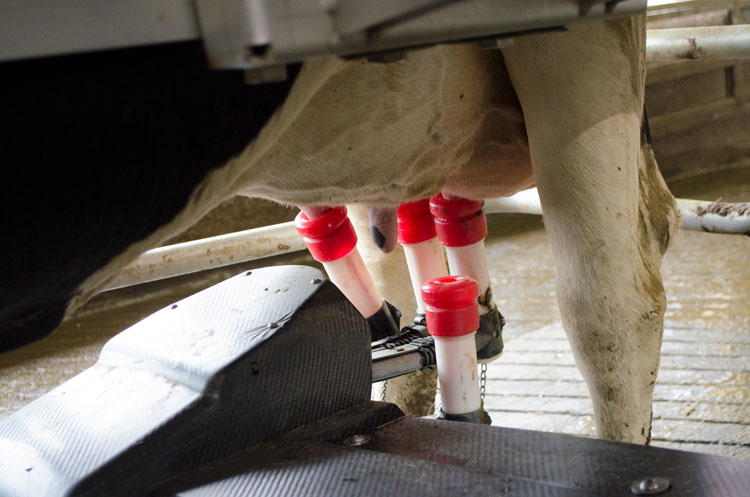
When it first debuted in the states nearly two decades ago, robotic milking came with a steep learning curve. The latest numbers collected by the University of Minnesota and shared at the American Dairy Science Association’s annual meeting in June indicated that robotic milk harvesting has gotten better and quicker.
According to the research group, the average milk production on the 36 automated milking system (AMS) farms tracked in 2018 was 82.1 pounds per cow per day and 4,737 pounds of milk per robot per day. That’s better than the group’s numbers recorded in 2013 and 2014 when AMS-milked cows averaged 73 pounds of milk per day and robots averaged 4,094 pounds per day.
On a per cow basis, the group found that milk production was understandably strongly correlated with milking frequency. The farms averaged a milking interval of 7.9 hours which equates to three milkings per day per cow. The cows averaged 27.9 pounds of milk per milking with 3.78 percent fat and 3.08 percent protein. These numbers remain comparative to cows milked three times per day through a parlor system. As the researchers emphasized, frequent milking remains the predominant driver of milk production.
Robots have time budgets, too
Further, the researchers explored variables that were most closely correlated with milk production per robot. These variables they described as factors affecting the robot’s time budget.
The time the robot took to prepare cows for milking was most negatively associated with milk per robot (-371 pounds). Obviously, prepping cows is necessary. That being said, robots and technology that shorten the prep time without compromising milk quality and cow health have the potential to really improve milk production per robot.
Failures per robot and failure time were both also negatively correlated with milk production per robot. Likewise, refusals per robot and refusal time reduced milk production per robotic unit. Logically, more cows that enter the robot and are not milked equate to time lost in the robot. We want to have failure and refusal rates that leave the robot without work for a very short period of time.
Finally, milkings per robot, milking time per robot, and cows per robot were positively correlated with milk production per robot. Cleaning time and free robot time did not have significant correlations with milk production per robot.
When considering robotic milking technologies, realize that many factors contribute to success. Those variables span cow-related factors and robot-related factors, and all of them should be considered along with the technology.








